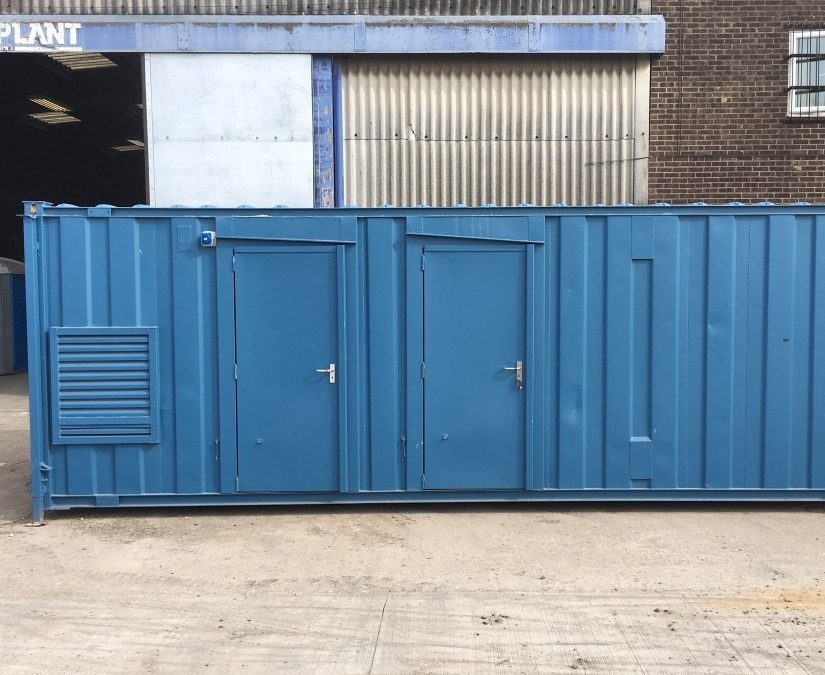In the world of construction, efficiency and productivity are two of the most important metrics to get right. It is an industry constantly seeking innovative ways to streamline operations, reduce downtime, and enhance worker satisfaction. It’s through this pursuit of productivity and efficiency that welfare units have grown into a useful tool for optimising construction site efficiency. This type of site cabin hire provides essential amenities and support to the workforce, significantly impacting overall project success. In this article, we’ll look at the important role of welfare units in construction, illustrating how they contribute to improved efficiency and productivity on-site.
What is a Welfare Unit?
A welfare unit is a mobile or temporary facility used on construction sites and other remote work environments to provide essential amenities and support to workers. These units are self-contained structures designed to offer a range of facilities deemed essential for the well-being and comfort of the workforce. Depending on their size and configuration, welfare units can include features such as rest areas, toilets, handwashing stations, changing rooms, canteens, and sometimes even medical support services.
These units are engineered to be easily transportable and adaptable to various site conditions, ensuring that workers have access to necessary amenities regardless of the location of their work. Welfare units can be standalone or part of a larger, interconnected setup, and they are often equipped with environmentally friendly features like solar panels, energy-efficient lighting, and water-saving fixtures to minimise their ecological footprint.
Importance of Worker Welfare in Construction
Worker welfare is an ethical concern often key to construction project success. The physical and mental well-being of the workforce directly affects productivity, quality of work, and safety on-site. A content and healthy workforce is less prone to accidents, exhibits higher morale, and delivers better performance. Welfare units are equipped with facilities such as rest areas, toilets, changing rooms, and sometimes even canteens and medical support, which are much more helpful than standard site cabins and play a central role in ensuring the well-being of construction workers.
How Welfare Units Improve Construction Sites
Welfare unit hire on construction sites offers plenty of benefits for the workforce and the project as a whole. A functional welfare unit is a huge boon for any work site, from ensuring regulatory compliance on-site to boosting morale among workers. So, let’s take a look at some of the ways welfare units improve construction sites:
Enhancing Productivity Through Comfort and Convenience
Welfare units offer a sanctuary where workers can take breaks, refresh, and recuperate from the harsh conditions often found on construction sites. By providing comfortable and convenient facilities, these units help significantly reduce fatigue and stress among the workforce. The availability of clean and restful areas enables workers to recharge, leading to increased concentration and efficiency upon return to work. Moreover, on-site amenities’ convenience reduces workers’ need to leave the site for basic needs, minimising downtime and maximising productive work hours.
Health and Safety: A Priority
The construction industry is notorious for its high accident rates, making safety a top priority. Welfare units contribute to a safer work environment by offering facilities that uphold hygiene standards, such as clean toilets and handwashing stations, which are crucial in preventing the spread of diseases. Equipped with first aid stations and sometimes even medical personnel, these units ensure immediate care is available in case of an accident, further safeguarding worker health and maintaining continuity of operations.
Compliance and Legal Requirements
Regulatory compliance is another aspect where welfare units play an essential role. Legislation such as the Construction (Design and Management) Regulations means that sites must provide basic amenities for construction workers. Failure to comply can result in hefty fines, legal challenges, and project delays. By integrating welfare units into their operations, construction companies can easily meet these legal requirements, avoiding potential legal and financial repercussions.
Boosting Morale and Retention
The presence of welfare units on-site is also a significant morale booster for the workforce. It demonstrates the company’s commitment to their well-being and comfort, fostering a sense of value and belonging among the workers. This positive work environment can lead to higher job satisfaction, which is crucial in an industry facing skilled labour shortages. Improved worker satisfaction can result in better retention rates, reducing the costs and disruptions associated with high turnover.
Environmental and Community Considerations
Modern welfare units are designed with sustainability in mind, and are often equipped with eco-friendly features such as solar panels, water-saving fixtures, and efficient heating and cooling systems. Their use contributes to the environmental sustainability of construction projects while minimising disruption to the surrounding community. By providing on-site facilities, the need for workers to leave the site for breaks is reduced, lessening the impact on local amenities and reducing traffic congestion around the site.
Strategic Placement for Maximum Efficiency
The strategic placement of welfare units can further enhance their effectiveness in improving site efficiency. Placing these units in accessible, yet out-of-the-way locations ensures that they do not interfere with construction operations while still being conveniently available to workers. The careful planning of the layout and location of welfare units can significantly impact the smooth flow of operations and the overall productivity of the construction project.
Optimise Your Construction Site With Welfare Units
Welfare units are more than just a basic provision for construction sites; they are a critical investment in the workforce’s efficiency, safety, and morale. These units ensure compliance with legal standards by providing essential amenities and contribute to a healthier, more productive, and satisfied workforce. As construction projects continue to grow in complexity and scale, the importance of integrating comprehensive welfare facilities will only increase.
If you’re interested in learning more about welfare units, or would like to rent out a static or mobile welfare unit, then please contact our team at Addplant today.





